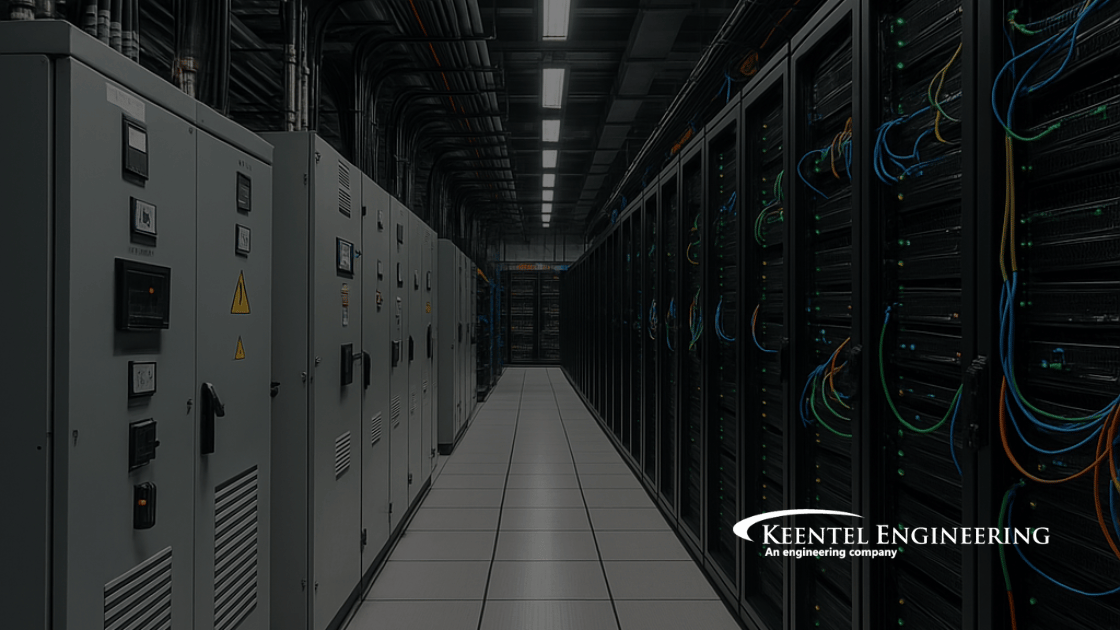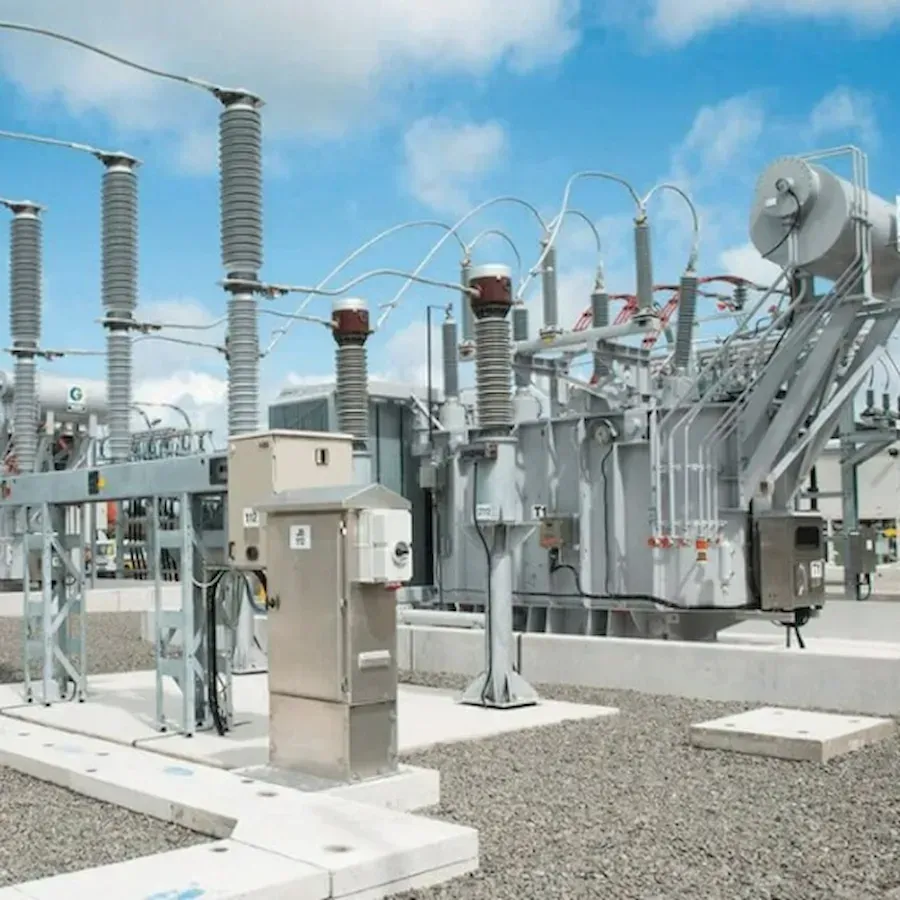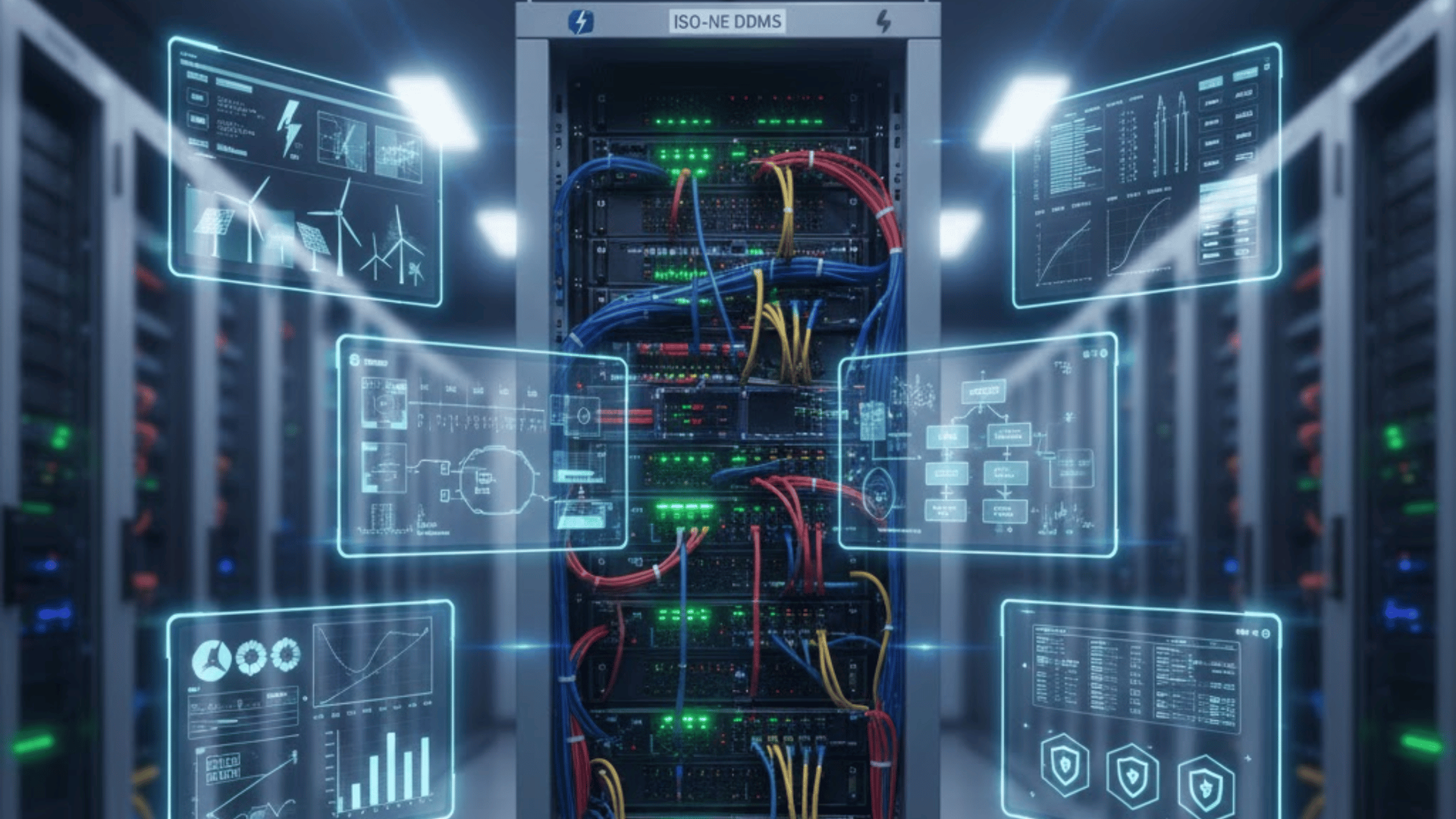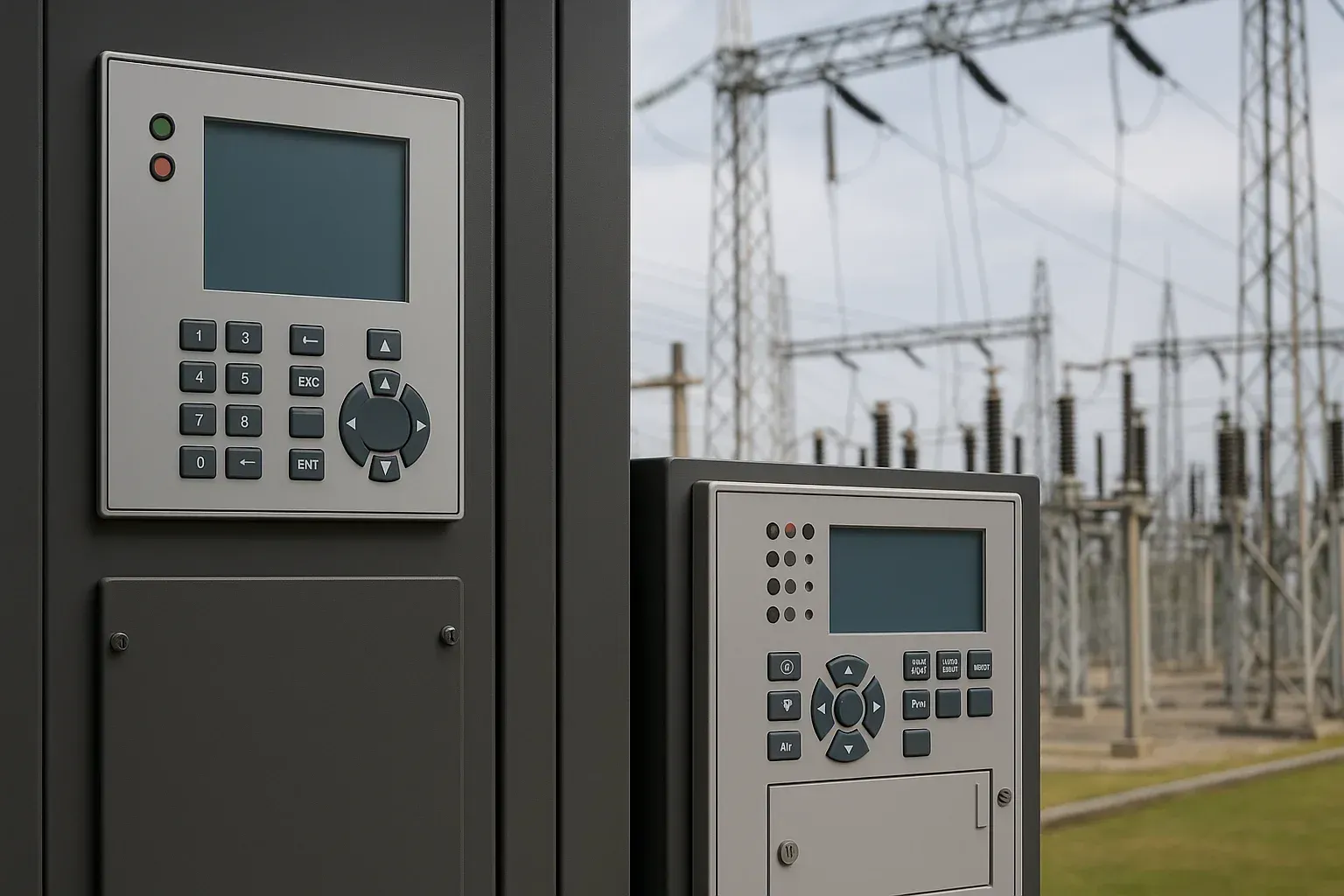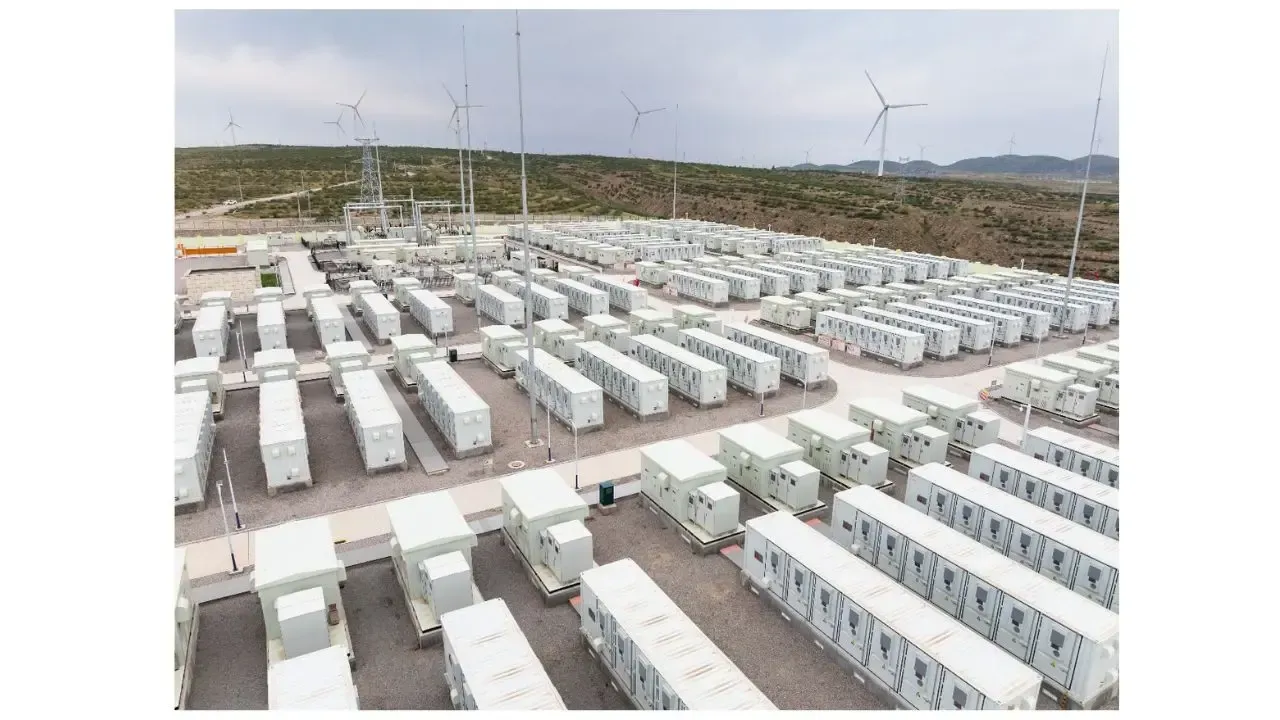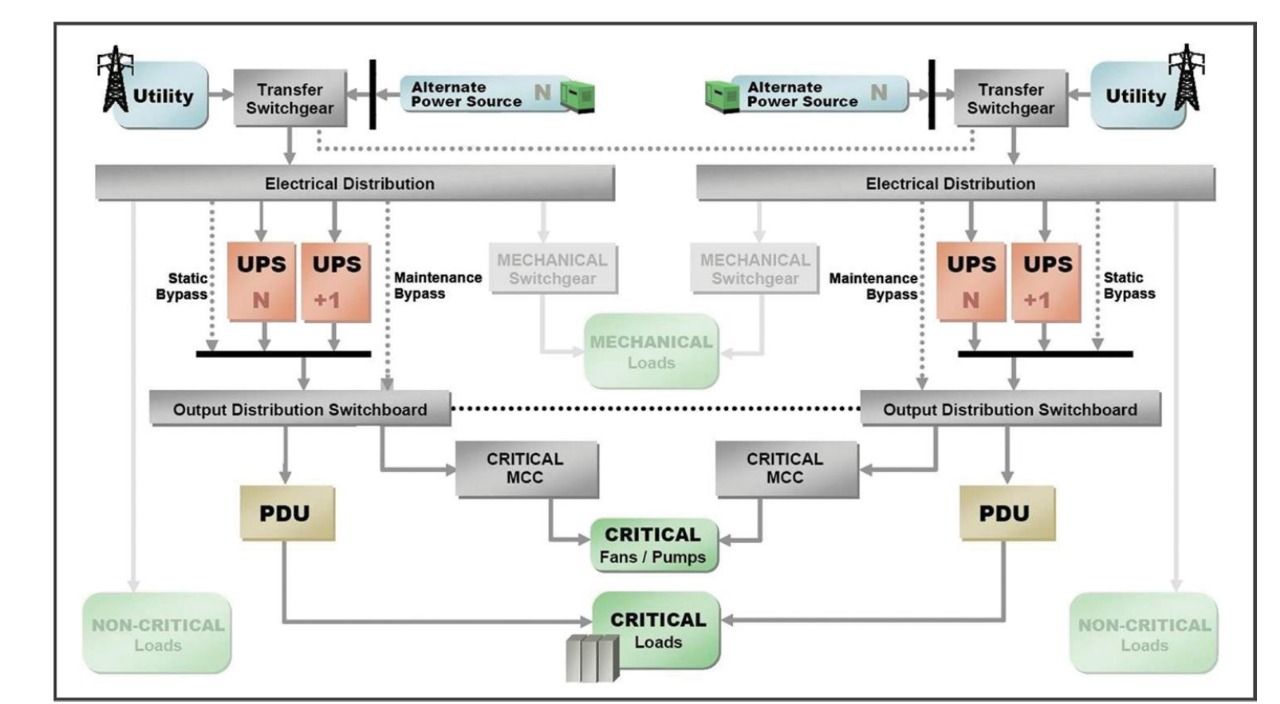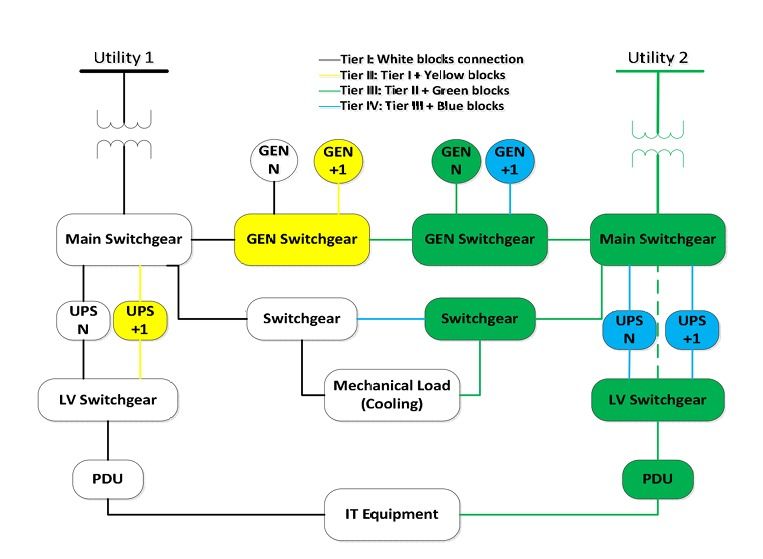A Coordinated Electric System Interconnection Review—the utility’s deep-dive on technical and cost impacts of your project.
Challenge: Frequent false tripping using conventional electromechanical relays
Solution: SEL-487E integration with multi-terminal differential protection and dynamic inrush restraint
Result: 90% reduction in false trips, saving over $250,000 in downtime
Data Center Growth & Grid Readiness – Engineering Solutions by Keentel
August 15, 2025 | Blog
Introduction
Data centers are no longer just part of the digital economy—they are one of its fastest-growing drivers of electricity demand. With hyperscale facilities exceeding 1 GW in capacity and artificial intelligence (AI) workloads pushing rack densities to over 60 kW per rack, the implications for grid planning, interconnection, and operations are profound.
Keentel Engineering leverages insights from the IEEE PES TR131 report to guide utilities, developers, and regulators in addressing these challenges. Our expertise in HV/EHV transmission design,
NERC compliance, and power system studies positions us at the forefront of this transformation. Our Keentel Engineering solutions combine transmission planning, compliance modeling, and power system studies to support long-term data center growth and grid readiness.
Why Data Center Load Growth Is Different
Unlike traditional industrial loads, data centers:
- Operate with nonlinear, power-electronic loads that can cause harmonics, voltage flicker, and dynamic power swings.
- Require uninterrupted, high-quality power, making them sensitive to grid disturbances.
- Can scale to hundreds or thousands of MW, impacting resource adequacy,
transmission planning, and real-time system stability.
Key Engineering Challenges
- Load Forecasting and Uncertainty
Forecasts for U.S. data center electricity demand by 2028 range from 6.7% to 12% of total generation. Confidential project pipelines, rapid AI adoption, and edge computing trends make precise forecasting difficult. Keentel addresses this by combining statistical modeling with utility interconnection intelligence. - Interconnection and Transmission Constraints
Some planned facilities exceed grid contingency limits, requiring multi-billion-dollar transmission upgrades. Keentel provides feasibility studies, breaker duty analysis, and high-fidelity dynamic models to expedite interconnection while maintaining NERC PRC compliance. - Dynamic Performance and Fault Ride-Through
AI and cloud workloads cause rapid power swings during both training and inference states. Poorly tuned protection systems risk mass load tripping during faults, as seen in the 2024 Virginia event where 1,500 MW of data center load disconnected. Keentel engineers ride-through-compliant settings and dynamic load models to prevent such events. - Resource Adequacy and Backup Systems
Many data centers rely on diesel gensets for backup—raising environmental concerns and air permitting limits. Keentel assists in integrating renewable + storage microgrids to meet sustainability and resiliency goals.
Operational Solutions
- Demand Response Integration
Flexible AI or crypto workloads can participate in peak load reduction programs, reducing strain on the grid while monetizing load flexibility. - Blackstart and Load Shedding Coordination
Keentel designs Load Criticality Index classifications and segmentation schemes for controlled restoration, supporting utility and power system studies. - High-Resolution Monitoring
We deploy waveform measurement units (WMUs) to capture sub-millisecond load dynamics, supporting NERC MOD-032/033 model validation and improving model accuracy for planning and operations.
Engineering Innovations for Grid Readiness
- Standardized Substation Templates
Reducing lead times and ensuring compliance with utility specifications, leveraging our substation design expertise. - Gas-Insulated Substations (GIS)
Minimizing footprint near urban hyperscale sites while meeting reliability and safety standards. Keentel’s experience with GIS solutions supports complex interconnection needs for rapidly expanding data center clusters. - Advanced Protection Coordination
Aligning UPS and generator protection with utility reclosing and ride-through curves. These efforts connect directly to Keentel Engineering relay services and broader compliance and modeling support, ensuring resilient performance under dynamic grid conditions. - Continuous Waveform Recording
Real-time analysis of fast transients to prevent oscillations and instability, supporting proactive grid management.
Conclusion
The unprecedented scale and complexity of modern data centers demand equally advanced engineering and policy solutions. Keentel Engineering bridges the gap between data center developers, utilities, and regulators—ensuring that grid readiness is achieved without compromising reliability, sustainability, or cost efficiency.
Technical FAQs – Data Center & Grid Engineering
Q1: Why is data center growth a grid concern?
A: Hyperscale facilities can consume hundreds of megawatts, straining resource adequacy, transmission capacity, and overall grid stability.
Q2: What makes AI data centers different from traditional ones?
A: AI workloads cause rapid power swings and higher rack densities, creating dynamic stress on the power system.
Q3: How can you forecast data center loads accurately?
A: By combining public utility data, interconnection queue analysis, and AI workload modeling for precision forecasting.
Q4: What is “fault ride-through” for data centers?
A: The ability to stay connected during short voltage or frequency disturbances without tripping.
Q5: Why are protection settings critical?
A: Incorrect coordination can cause mass simultaneous tripping, leading to large-scale grid instability.
Q6: How can demand response work for data centers?
A: Flexible workloads (e.g., AI training, crypto mining) can be curtailed during peak demand for financial incentives.
Q7: What role do UPS systems play in grid interaction?
A: They provide instant backup power but also affect fault current and ride-through performance.
Q8: How do blackstart plans involve data centers?
A: Critical facilities are restored in a priority sequence based on size, fuel reserves, and service criticality.
Q9: What causes harmonics in data centers?
A: High concentrations of AC/DC switching converters in IT equipment power supplies.
Q10: Can data centers operate as microgrids?
A: Yes—integrating renewable energy and battery storage improves resilience and sustainability.
Q11: What is “edge computing” and its grid impact?
A: Processing data closer to users; this shifts demand toward distributed facilities, changing load patterns.
Q12: How do utilities avoid stranded infrastructure costs?
A: By requiring financial deposits and milestone commitments before building major grid upgrades.
Q13: What high-resolution monitoring is recommended?
A: Waveform Measurement Units (WMUs) with 1 kS/s sampling to capture sub-millisecond load dynamics.
Q14: How do co-location facilities affect reliability?
A: Shared infrastructure with generation can speed interconnection, but requires careful reliability planning.
Q15: What does PUE mean?
A: Power Usage Effectiveness = Total facility energy ÷ IT equipment energy (lower is better).
Q16: Why are transformer lead times a challenge?
A: Global supply chain delays can push deliveries 24–36 months, delaying projects.
Q17: How are voltage sags managed?
A: Through motor ride-through studies, reactive power support, and FIDVR mitigation.
Q18: What standards govern data center interconnection?
A: IEEE 519 (harmonics), IEEE 2800 (IBR performance), and NERC PRC standards for reliability.
Q19: What is the Load Criticality Index?
A: A classification system for prioritizing load restoration during blackstart events.
Q20: How can Keentel Engineering help?
A: Delivering end-to-end engineering—from feasibility studies and interconnection design to compliance and commissioning.
We deploy waveform measurement units (WMUs) to capture sub-millisecond load dynamics, supporting NERC MOD-032/033 model validation and strengthening planning accuracy. This monitoring capability complements our data center engineering solutions, including electrical studies, MEP engineering for AI data centers, and reliability assessments. Keentel also supports utilities through enhanced transmission services, addressing the rising interconnection pressures driven by large AI and cloud facilities.
Don’t wait for grid challenges to delay your project. Contact Keentel Engineering for a consultation and discover how our proven expertise can streamline your data center interconnection, ensure NERC compliance, and future-proof your operations.
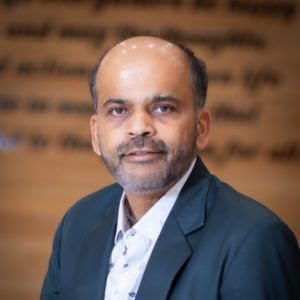
About the Author:
Sonny Patel P.E. EC
IEEE Senior Member
In 1995, Sandip (Sonny) R. Patel earned his Electrical Engineering degree from the University of Illinois, specializing in Electrical Engineering . But degrees don’t build legacies—action does. For three decades, he’s been shaping the future of engineering, not just as a licensed Professional Engineer across multiple states (Florida, California, New York, West Virginia, and Minnesota), but as a doer. A builder. A leader. Not just an engineer. A Licensed Electrical Contractor in Florida with an Unlimited EC license. Not just an executive. The founder and CEO of KEENTEL LLC—where expertise meets execution. Three decades. Multiple states. Endless impact.
Services

Let's Discuss Your Project
Let's book a call to discuss your electrical engineering project that we can help you with.

About the Author:
Sonny Patel P.E. EC
IEEE Senior Member
In 1995, Sandip (Sonny) R. Patel earned his Electrical Engineering degree from the University of Illinois, specializing in Electrical Engineering . But degrees don’t build legacies—action does. For three decades, he’s been shaping the future of engineering, not just as a licensed Professional Engineer across multiple states (Florida, California, New York, West Virginia, and Minnesota), but as a doer. A builder. A leader. Not just an engineer. A Licensed Electrical Contractor in Florida with an Unlimited EC license. Not just an executive. The founder and CEO of KEENTEL LLC—where expertise meets execution. Three decades. Multiple states. Endless impact.
Leave a Comment
We will get back to you as soon as possible.
Please try again later.
Related Posts


